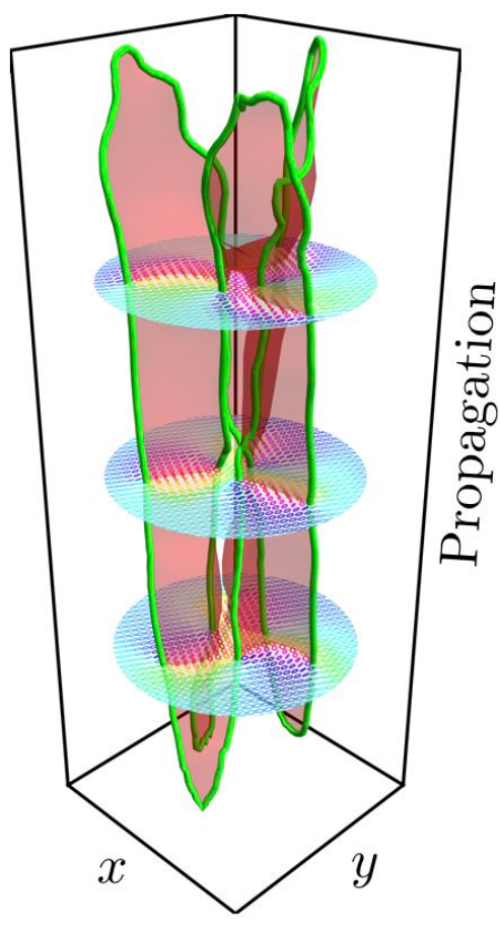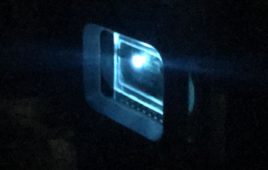Laser light may appear to be a single, tightly focused beam. In fact, it’s an electromagnetic field, vibrating in an ellipse shape at each point in space. This multidirectional light is said to be “polarized.”
The effect can be seen with polarized sunglasses, which only allow one direction of light to penetrate. By holding them up to the sky and rotating them, viewers will see darker and brighter patches as light flowing in different directions appears and disappears.
Now, scientists have been able to use holographic technology to twist a polarized laser beam into knots.
Professor Mark Dennis, from the University of Bristol’s School of Physics and University of Birmingham’s School of Physics and Astronomy, led the theoretical part of the research.
He says, “We are all familiar with tying knots in tangible substances such as shoelaces or ribbon. A branch of mathematics called ‘knot theory’ can be used to analyze such knots by counting their loops and crossings.
“With light, however, things get a little more complex. It isn’t just a single thread-like beam being knotted, but the whole of the space or ‘field’ in which it moves.
“From a [math] point of view, it isn’t the knot that’s interesting, it’s the space around it. The geometric and spatial properties of the field are known as its topology.”
In order to analyze the topology of knotted light fields, researchers from universities in Bristol, Birmingham, Ottowa, and Rochester used polarized light beams to create structures known as “polarization singularities.”
Discovered by Professor John Nye in Bristol over 35 years ago, polarization singularities occur at points where the polarization ellipse is circular, with other polarizations wrapping around them. In three dimensions, these singularities occur along lines, in this case creating knots.
The team were able to create knots of much greater complexity than previously possible in light and analyzed them in fine detail.

Experimentally measured polarisation singularity trefoil knot. Image: University of Bristol
Dennis adds, “One of the purposes of topology is to talk about showing data in terms of lines and surfaces. The real-world surfaces have a lot more holes than the [math] predicted.”
The work, which was funded by a Leverhulme Trust Research Project Grant, is an important step forward in the study of optics and polarization, and, say researchers, could lead to the creation of new devices which process information through customized complex light structures.
Source: University of Bristol


